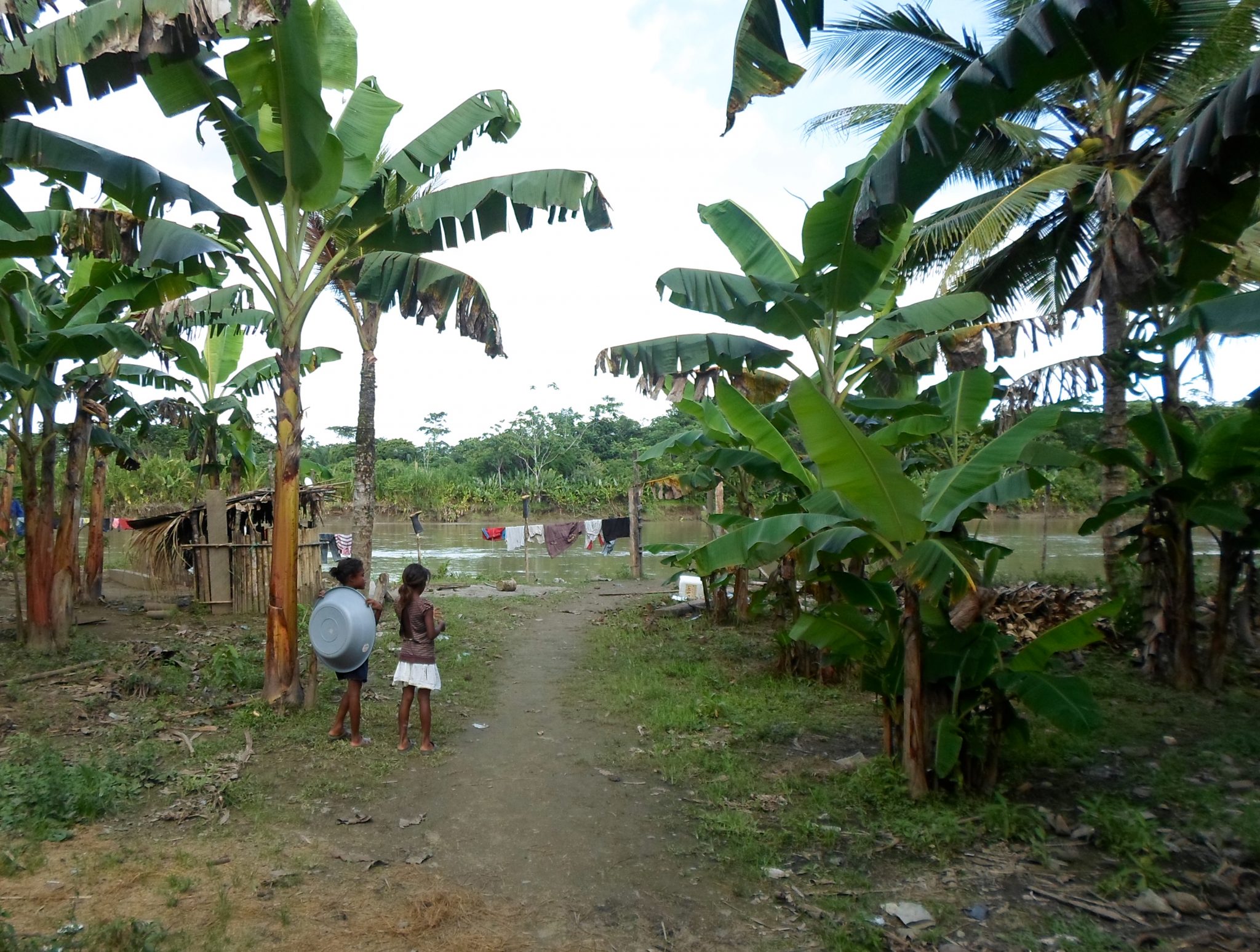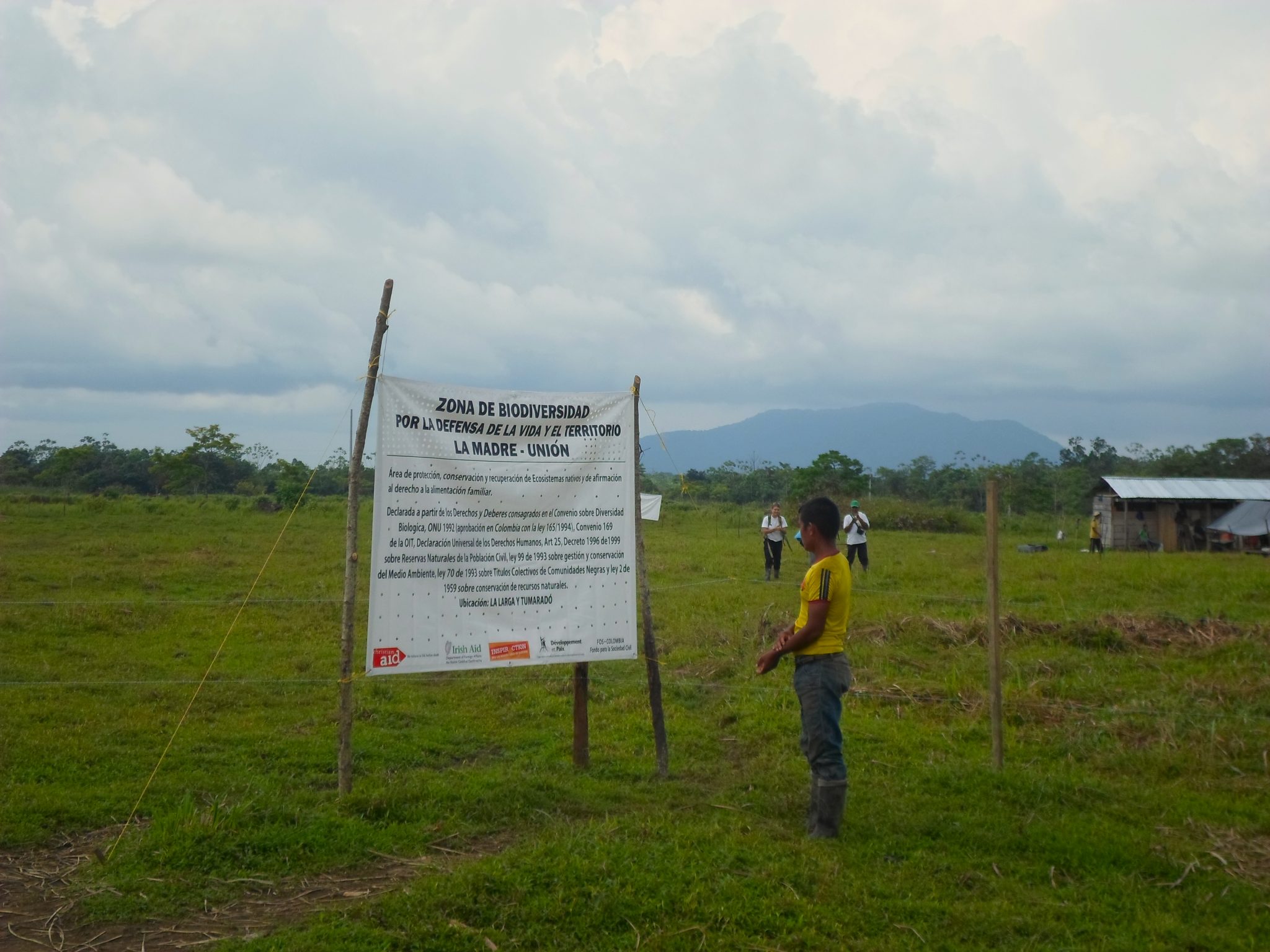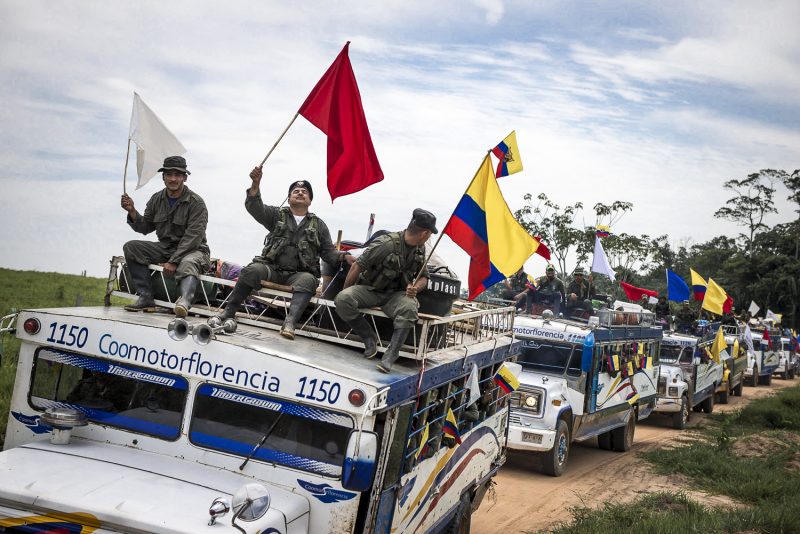One year after the peace accord between the Colombian government of Juan Manuel Santos and the Revolutionary Armed Forces of Colombia, signed on November 24, 2016, its implementation is making no headway. This article examines the main obstacles to the materialization of the peace accord, from its difficult incorporation in Colombian law, to concrete problems identified by peasant organizations and NGOs that defend the victims of the conflict. Issues of power-sharing, security and land are at the core of present difficulties.
Colombia is at a crossroad: the FARC have given up their weapons, but measures aimed at concretizing the deal are still to be enforced. Core issues are power-sharing and the distribution of land. Demobilizing the FARC raises less challenges than tackling a host of unresolved problems concerning Colombia’s liberal democracy and its model of development.
The first draft of the peace accord was rejected by referendum on October 2, 2016 after four years of talks in Havana, forcing the government and the guerilla movement to negotiate a second deal in late November. This rejection expressed the deep divides of Colombian society as much as the lack of preparation of government and political actors, who failed to raise public awareness on the importance of the referendum1.
Moreover, the peace talks between the guerillas and the government raised issues that went far beyond the modalities of ceasefire and disarmament. Structural problems were discussed in Cuba, such as the reasons why the guerilla movement started in the 1960s, or the transformation of the conflict in connection with the illegal coca trade in the 1980s. The reintegration of ex-fighters in political life, reparations for the victims, and the transformation of the country’s land structure were also addressed.
Since last year, Colombia’s Congress has set up a fast-track law-making process2, in order to incorporate the dispositions of the peace accord into national law, and create the institutions to implement them. However, this procedure has become a political battleground, with MPs challenging several points of the deal. After one year of work, the results leave a sour taste: political forces opposed to the Havana accord have considerably amended, and undone to some extent, the agreement reached with the FARC.
This article examines the main issues pertaining to the materialization of the peace accord, starting with its difficult incorporation into Colombian law, then moving on to concrete obstacles identified by peasant organizations and NGOs that defend the victims of the conflict. Indeed, inhabitants of the areas most impacted by the conflict face two major concerns. First, ensuring the safety of ordinary citizens and local leaders in former FARC strongholds, where insecurity has been rampant since the agreement due to the reconfiguration of armed actors—paramilitary groups, criminal networks, other guerillas, and FARC splinter groups. Second, reasserting the state’s presence in order to guarantee and organize land ownership, as well as to promote the social and economic development of these historically marginalized regions.

Colombia Congress amends the Havana Peace Accord
For four years, the government and the FARC bitterly negotiated the guerilla movement’s renunciation of armed struggle in favor of electoral politics.3.The Colombian MPs (who were not party to the talks) revised two points of the agreement after long debates, namely transitional justice—whose role is to judge crimes committed during the conflict—and the “special circumscriptions for peace”, meant to favor the political representation of civil societies in areas formerly held by the guerillas or impacted by armed conflict. The creation of a “special justice for peace” (Justicia Especial para la Paz, JEP) running parallel to ordinary tribunals created a legal imbroglio. But there was also fierce opposition from the supporters of former president Alvaro Uribe Vélez, whose party (the Democratic Center) has consistently undermined the peace accord and delayed its implementation. This political camp still considers the ex-fighters as “terrorists” and rejects any political representation for the former guerilla movement, now transformed into a political party.
In anticipation of the legislative and presidential elections (March and May 2018), several political parties, including the Democratic Center, have proposed to elect a constituent assembly or hold another referendum bent aiming at annulling the 2016 accord. Current president Juan Manuel Santos, who was counting on his majority in Congress to implement the agreement, obtained only lukewarm support, some majority MPs even voicing their opposition to the text. So did his vice-president Germán Vargas Lleras, who will run in the 2018 presidential election.
The Constitutional Court also weighed in: while it acknowledged the constitutionality of the agreement (thereby allowing the delicate disarmament process to continue), it censured important provisions concerning transitional justice. It was initially planned that all persons—military or civilian—having financially benefited of their active participation in the conflict would be judged by JEP tribunals. However, in a November 2017 decision, the Constitutional Court ruled that “third parties” were criminally responsible before ordinary tribunals only. This means that political leaders (former presidents, MPs, governors, etc.) and financial backers of the conflict are no longer accountable to transitional justice, unless they volunteer to do so. For human rights organizations, this ruling stands in the way of establishing the truth and achieving reparations for the victims4 : many companies have benefited from the forced displacement of populations to invest in “empty” areas, with the complicity of local and national politicians and the help of different armed groups. For instance the Colombian branch of Chiquita Brands, a U.S. banana importer, was condemned in the United States for financing the paramilitary group AUC (Autodefensas Unidas de Colombia, United Self-Defense Forces of Colombia) between 1997 and 2004, a period during which the populations of Lower Atrato (in the north of the Chocó department) were displaced. According to the results of an investigation led by the International Federation for Human Rights and the Colombian lawyers’ collective José Alvear Restrepo, the branch was highly profitable during the conflict. 5. To this day, firms keep occupying lands illegally and profiting from natural resources, fertile soils, and mining. One of the principles of the agreement, which states that all participants in the conflict—and not only armed ones—should be held accountable for their actions, was therefore effectively buried.
As the examples of Chiquita Brands illustrates, investigations by Colombian NGOs are crucial to establish the facts and accompany often resourceless victims. However, the same Constitutional Court ruling stated that human rights lawyers will no longer be allowed to sit as magistrates in JEP tribunals. Since they are the ones with the skills, experience and determination to see through complex cases of human rights abuse and war crimes, their partial exclusion from transitional justice mechanisms causes anxiety among the victims, who fear that their access to justice, truth and reparations might be jeopardized6.
Another key point attacked by the parliament is the creation of “special circumscriptions for peace”. According to the peace accord, the populations most severely affected by the armed conflict, who live in marginalized areas, were to be granted special circumscriptions in order to make their voice heard in Congress by electing members of civil society. A number of elected politicians, viscerally hostile to the FARC and already campaigning for the 2018 elections, forcefully opposed this measure, although it was designed to benefit victims of the conflict and marginalized populations.

Filling the void let by the FARC
While the peace accord is being challenged in Bogotá, the inhabitants of several areas in the country call for its immediate implementation. Transition to peace is urgent. The FARC occupied large swathes of the country, now coveted by mafias and drug traffickers, who are demanding higher yields of coca, by a constellation of new paramilitary groups, and by other guerilla movements like the ELN (Ejercito de Liberación Nacional-Army of National Liberation, currently engaged in difficult talks with the government) and FARC splinter groups (less than 10% of the organization). Once they have settled in an area, these armed groups brutally repress any resistance coming from local populations.
The NGO Somos Defensores, which documents violence against human rights defenders, has shown that the number of murdered activists rose by 30% in the first six months of the peace process.7. In total, 170 were killed in 20178, and 21 in January 2018 only (more than one murder every other day). The victims’ profile is alarming for the NGOs, for these generally local figures, less famous and visible at the national level, play a key role in implementing the peace accord in the villages.9.
They are often Indigenous, Afro-descendent, or peasant leaders who strove to recover stolen land and devise plans for local development, or activists who could have run for parliament in the special circumscriptions. In most cases, the murders happen in areas where the Army or armed groups have a strong presence.
“No concrete measure has yet been taken to dismantle criminal networks and paramilitary groups”
These regions are also characterized by abundant natural resources, which make them a magnet for legal and/or illegal economic interests. More than a year after the accord was signed, no concrete measure has yet been taken to dismantle criminal networks and paramilitary groups, which are progressively turning into security contractors for the companies and mafias bent on securing their hold on whole areas. They occupy lands by force to allow for the cultivation of coca and African oil palm, to “protect” mining and oil interests and intensive farming of cattle, etc. Due to their reconversion in business, paramilitary groups now enjoy a more tenuous relationship with the state than they used to. Their recent activity focuses on securing the transportation of resources and trade routes, facilitating legal (African oil palm, minerals) or illegal (coca and its transformation) economic activities. In the Larga Tumarado (Lower Atrato), for instance, 94% of the land is occupied illegally.10. Since 2014, the paramilitaries have come in hundreds, violently seizing the territories of Afro-descendent communities.
Groups overtly compete over the areas vacated by the FARC. In the Urabá region, the demobilization of their 57th Front led to a fierce struggle between the ELN and the paramilitaries of the AGC (Autodefensas Gaitanistas de Colombia, Gaitanist Self-Defense Forces of Colombia).
Land, the key to war and peace
The first item discussed in Havana was land policy. However, relevant provisions in the peace accord are difficult to enforce. Administrative structures were created in Bogotá (like the Agencia de Renovación del Territorio-Agency for the Renewal of the Territory), but on the ground implementation is slow, and at times incoherent. Indeed, the land question in Colombia is manifold: the security threats mentioned above are compounded by issues of land distribution, formalization of land ownership, and development in sometimes remote areas (infrastructures, access to public services, credit, and outlets, etc.). Lastly, there is the thorny question of the culture of coca, another point raised during peace talks.
Coca farmers are faced with two contradictory policies. The first policy stems from the peace accord, which provides for programs to replace coca plantations with legal crops. These plans rest on the hypothesis that peasants were coerced to grow coca by armed groups and/or by the need to survive in conflict zones. The second policy is one of forced eradication, by hand or aerial spraying. This eradication policy, which is part of the U.S.-financed “Plan Colombia” and war on drugs, effectively treats coca farmers as criminals, guilty of selling coca base to traffickers who transform it into cocaine earmarked for export. Many peasants find themselves caught in a double bind: non-state armed actors pressure them to grow more coca while soldiers pull up their plants, depriving them of their livelihood. Several local NGOs thus call for credible crop-substitution programs. Moreover, these same rural areas are generally burdened with structural obstacles to development, such as a lack of roads connecting them to towns and cities, as well as a mediocre access to inputs, credit and tools.
The peace accord includes two major provisions pertaining to land: the creation of a fund to distribute land and formalize ownership titles, and a set of local development programs in conflict-stricken areas. However, these measures are delayed by administrative sluggishness, security threats, and conflicting economic policies. Colombian authorities are handicapped by insufficient preparation and poor knowledge of the regions concerned, whose natural resources are a magnet for the greed of powerful actors. Land distribution was already historically unequal. In addition, the armed conflict has brought about new waves of settlement and more or less legal land grabs. There is no inventory of public lands, nor even an up-to-date cadaster. In some regions, the GPS coordinates of land lots are not conform to standard, leading to local disputes. In other cases, land collectively own by Afro-descendent or Indigenous communities is nonetheless granted in concessions to mining or oil interests. The company AngloGold Ashanti thus claims a mining title on the collective land of La Larga-Tumaradó communities, whose restitution to forcibly displaced persons the peace accord provided for. After a harsh legal dispute, the concession was suspended, but not cancelled. Traditional community leader Mario Castaño, who had denounced threats from paramilitary groups, was killed on November 27, 2017. In a neighboring river basin it is a project for expanding agro-business funded by the Agency for the Renewal of the Territory that raises concerns: it is steered by investors suspected of having close relations with the AGC paramilitaries. The social and environmental consequences of this project were denounced by community leader Hernan Bedoya, who was murdered too on December 8, 2017. The government’s economic policies thus lead to legalizing land grabs.
Other governmental measures, such as the planned revision of the 1994 law on land and the creation of “zones of strategic interest”, appear at odds with the proclaimed objectives of the peace process. The 1994 law limits land accumulation, and grants priority to landless or poor peasants in accessing public lands. The revised law would allow the state to sell or concede public lands to private companies, which would result in expelling the populations who occupy them, or prevent their restitution as part of the reparation process. This project would also make possible for the government to grant land concessions to firms without specifying how the environmental impact of their activities would be controlled. Peasant organizations are all the more concerned that these initiatives are taking shape much faster than the development and land restitution programs11 : government policies run directly counter to the spirit of the peace agreement.
The future of the peace-process will be decided at the ballot box
Actualizing the peace accord is vital to ensuring a real end of the Colombian armed conflict, which has already caused the displacement of 6 million people12, the death of 220,000 more (of whom 80% were civilians), and 82,998 forced disappearances13.
What is at stake in the peace process is not merely a deal between the government and the oldest guerilla movement in the country, but a solution for the many Colombians who still live in lawless areas. Instead offurther militarizing the country, the government must find answers in terms of public investment in these regions, so as to give peasants long-term development perspectives and protect local leaders involved in the transition to peace. However the House of Representatives, often out of mere partisanship, has progressively undone crucial points of an agreement that ambitioned to be more than a peace treaty. Issues of power-sharing, land, security, and development continue to dominate the debates and the post-accord context. The 2018 elections will be decisive. In the meantime, land attracts ever-increasing greed, and human rights violations continue apace.
Notes
- http://legacy.noria-research.com/colombia-finally-heading-toward-peace-agreement/ ↩︎
- In December 2016, the Constitutional Court green-lighted a fast-track procedure for a duration of 6 months, later renewed for 6 more months. It accelerates parliamentary debates and legislative shuttles between the two chambers, and allows the president to issue decrees with the force of law. The government has legislative initiative, and therefore defines the topics on which the parliament must vote. ↩︎
- The laying down of weapons by guerillas was smooth, and hailed as a success by international observers. As agreed, 6,804 fighters gathered in 23 “transition zones” and 8 camps, laying down 8,994 weapons. ↩︎
- Interviews with human rights activitsts in Bogotá November 2017. ↩︎
- Investigation “Defender el territorio y el ambiente en contextos de actividad de empresas extractivas”, Colectivo de Abogados José Alvear Restrepo (Cajar),u2028Observatorio para la protección de los Defensores de Derechos Humanos FIDH-OMCT, 2017. ↩︎
- Interview with an activist who accompanies victims of the conflict, Bogotá, November 2017. ↩︎
- This is in comparison with 2016, itself a particularly bloody year according to the same report. The NGO also points out that 87% of the murders of social leaders remain unpunished, for ordinary justice is unable to convict the decision-makers. Source: Somos Defensores. ↩︎
- Source: Indepaz, Research Institute for Development and Peace. ↩︎
- Interviews with international NGOs that accompany threatened individuals, communities and organizations in the field Bogotá, November 2017. ↩︎
- Source : CINEP. ↩︎
- Interview with a members of a peasant organization, Bogotá, November 2017. ↩︎
- In 2016, Colombia was the 2nd country in the world in terms of refugees (mostly internally displaced) after Syria. Out of 6 million people displaced during the conflict, over 2 million were displaced between 1996 and 2002. There are also 360,000 Colombian refugees abroad. ↩︎
- Between 1958 and 2015 according to the last report of the National Center for Historical Memory. ↩︎

